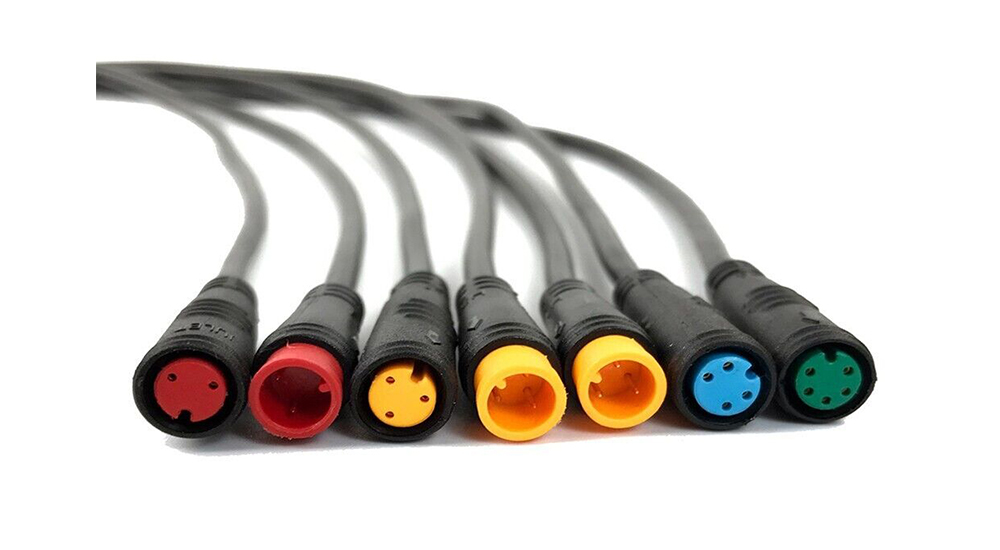What Are IP Ratings and Why Do They Matter for E-Bikes

It used to be that when it came to protection from moisture, like with a wristwatch, we had two rather loose ratings: water-resistant and waterproof. These days those terms have been replaced by a two number system referred to as Ingress Protection (or IP) rating.
What the IP rating system offers e-bike riders is a better understanding of the level of protection we can count on when riding in circumstances that aren’t sunny and dry. It’s a relatively easy system to understand, as you’ll see.
What The IP Number System Means
Protection Ratings Against Dust
0: Does not prevent access or contact from objects.
1: Protects large surfaces of the body (like hands) from making contact. Denies entry of solid objects greater than 50mm.
2: Entry cannot be accessed to hazardous parts by objects such as fingers or solid objects greater than 12.5mm in diameter.
3: Protects against contact with hazardous parts by items such as a tool or thick wire. Denies access from solid objects greater than 2.5mm.
4: Denies contact to hazardous parts from items such as a wire, screw, etc. and offers protection against solid objects greater than 1mm.
5: All hazardous parts are protected from contact. Dust protected.
6: All hazardous parts are protected. Dust-tight.
With protection against dust, it’s easy to see how the level of protection increases on an objective basis. Something with a dust IP rating of 2 offers four times the protection of something with a rating of 1. And a rating of 3 offers five times the protection of a 2.
Generally, what we see with e-bikes is a rating of 5 for dust. That’s because achieving a rating of 6 generally requires that the product be fully sealed, and that’s not possible with an e-bike motor because the bottom bracket (drive shaft) requires an opening in the motor housing in order to extend from the housing.
Protection Ratings Against Moisture
0: No protection
1: Safeguards against vertically-falling water drops.
2: Shields against water drops at a 15-degree angle.
3: Protects against water sprays at a 60-degree angle.
4: Water splashing from any angle is denied.
5: Water jets from any angle will not penetrate.
6: Protected against powerful water jets and heavy seas.
7: Is not affected by temporary submersion in water for 30 minutes at 1-meter depth.
8: Is not affected by temporary submersion in water with depths greater than 1 meter.
9K: Protects against high pressure associated with steam cleaning.
Generally, what we see with moisture protection for an e-bike’s motor and electronics is an IP rating of 4 or 5. While a rating of 5 isn’t common, many Brose motors feature a rating of 5. The difference between 4 and 5 isn’t huge, and while an e-bike rated IP55, that is, 5 on the dust scale and 5 on the moisture scale may seem like an advantage—sealed well enough for a pressure washer—other components, namely the bearings—aren’t sealed well enough to keep out the direct spray of a pressure washer.
An e-bike rated IP54 will meet the needs of e-bike riders in any conditions a reasonable person would be willing to get on an e-bike, and even conditions an unreasonable person might ride. From rain to sand to mud, an e-bike with a rating of IP54 should perform without issue.
What Does an X Mean in an IP Rating?
Similarly, sometimes we see IP ratings of e-bikes shown as a single number, like so: IP4. What this means is that they are listing only the level of moisture protection, same as listing IPx4.
IP Ratings for E-Bikes
Our only word of caution would be if in looking at an e-bike’s specs the manufacturer listed the e-bike’s rating at IP43 or less. That’s not to say that bike shouldn’t be purchased (or ridden), but it would be an e-bike to avoid taking out in wet conditions.
More than anything, seeing a manufacturer list the IP rating of an e-bike shows that they are mindful of industry standards and accurate reporting. That alone is reassuring. What would be cause for concern is if a manufacturer doesn’t give any ingress protection information anywhere on their site. What are they hiding?
Ultimately, this is information that can help inform a purchase, but is not likely to be cause for steering a purchase for or away from a particular e-bike. That said, the best electric bikes typically have a higher IP rating.


